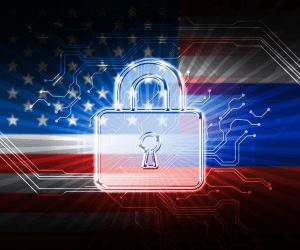The U.S. Cybersecurity and Infrastructure Security Agency’s (CISA) announcement of a pilot program to deliver cybersecurity shared services to critical infrastructure entities is a significant development in bolstering national cybersecurity resilience. This initiative, leveraging CISA’s expertise as a managed service provider, aims to extend robust cybersecurity support to non-federal organizations, particularly those most in need.
Owner/operators of the 16 critical infrastructure categories are eligible for the program. In summary the program aims to accomplish the following:

- Streamlines and Harmonizes Cyber Incident Reporting: The recommendations aim to simplify and unify the process of reporting cyber incidents. This includes establishing clear definitions, timelines, and triggers for reportable cyber incidents, and creating a standard reporting form for federal agencies. This effort is geared towards reducing the burden on critical infrastructure partners and enhancing the federal government’s ability to identify trends in malicious cyber activities.
- Provides Clarity and Consistency in Information-Sharing: The guidelines stress the importance of clear, consistent guidelines for information-sharing in the aftermath of a cyber-attack. This is crucial for private sector partners to effectively mitigate the impacts of such incidents. The clarity provided by these guidelines is expected to improve understanding of the cyber threat landscape, assist in recovery from disruptions, and help prevent future attacks.
- Establishes a Framework for Collaborative Development Among and Between Federal Agencies: The recommendations were developed in collaboration with the Cyber Incident Reporting Council (CIRC), involving over 50 different federal cyber incident reporting requirements. This extensive analysis and engagement with various industry and private sector stakeholders underscore the comprehensive and collaborative approach taken in formulating these recommendations.
- Balances Information Needs with Industry Burdens: Recognizing the critical role of reporting in cybersecurity, the guidance also acknowledges the need to balance information requirements with the burdens placed on the industry. This balance is aimed at ensuring that the reporting requirements are as efficient and non-redundant as possible.
- Provides for Wide Representation in the CIRC: The CIRC includes representation from 33 federal agencies, indicating the broad scope and inter-agency collaboration in addressing cyber incident reporting. This wide representation ensures a diverse range of perspectives and expertise in developing effective cybersecurity strategies.

Key implementation features of the pilot program include:
- Expanded Reach of CISA Services: The pilot program seeks to scale CISA-managed cybersecurity services to critical infrastructure segments, offering cost-effective solutions for better insight into threats and establishing a common baseline of cyber protection.
- Focus on Vulnerable Sectors: Initial deployment targets sectors like healthcare, water, and K-12 education, reflecting CISA’s ‘Target Rich, Resource Poor’ strategy.
- Shared Cybersecurity Services Portfolio: This offers access to commercial cyber threat intelligence and services, enhancing the capabilities of federal and selected non-federal entities.
- Engagement and Customization: CISA is conducting roundtables and information sessions with critical infrastructure partners across all regions and sectors to tailor services to their unique needs and challenges.
- Introduction of Protective DNS Resolver: Initially available to federal agencies, this service, now extended to pilot participants, uses threat intelligence to prevent connections to malicious domains, significantly reducing common cyber risks.

- Insight Gathering and Strategy Development: Insights from the pilot and discussions with infrastructure entities will inform CISA’s strategies to better serve national critical infrastructure organizations.
- Response to Escalating Cyber Threats: The program is a response to the increasing frequency and severity of cyber-attacks on critical infrastructure, exemplified by incidents like the Colonial Pipeline attack and threats from sophisticated hacker groups.
- Resource Accessibility: CISA has published resources like the Security Planning Workbook to aid critical infrastructure asset owners and operators in their security planning, making cybersecurity more accessible to a wider audience.
- Collaborative Efforts Against Emerging Threats: Recent joint advisories between CISA, DOD and the FBI demonstrate the collaborative efforts of U.S. federal government agencies with advanced cybersecurity expertise in addressing new and rapidly evolving cyber threats.
Overall, this initiative represents a proactive and collaborative approach to enhancing the cybersecurity posture of critical infrastructure sectors, addressing the growing complexity and impact of cyber threats in the modern landscape.
In summary, the CISA guidance supporting this pilot program represents a significant step in enhancing the resilience and security of critical infrastructure against cyber threats. By providing clear reporting guidelines, fostering collaborative development, and balancing industry needs, the guidance aims to improve the nation’s overall cybersecurity posture.

